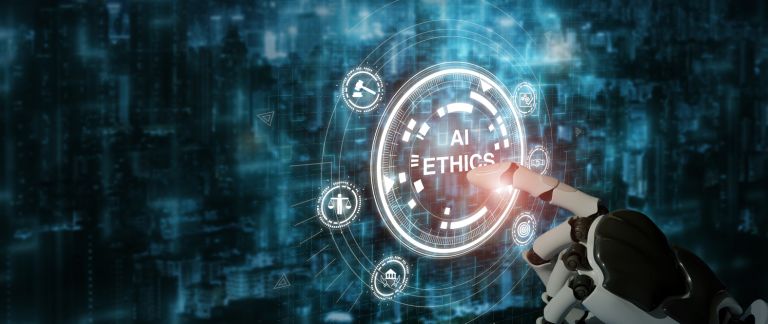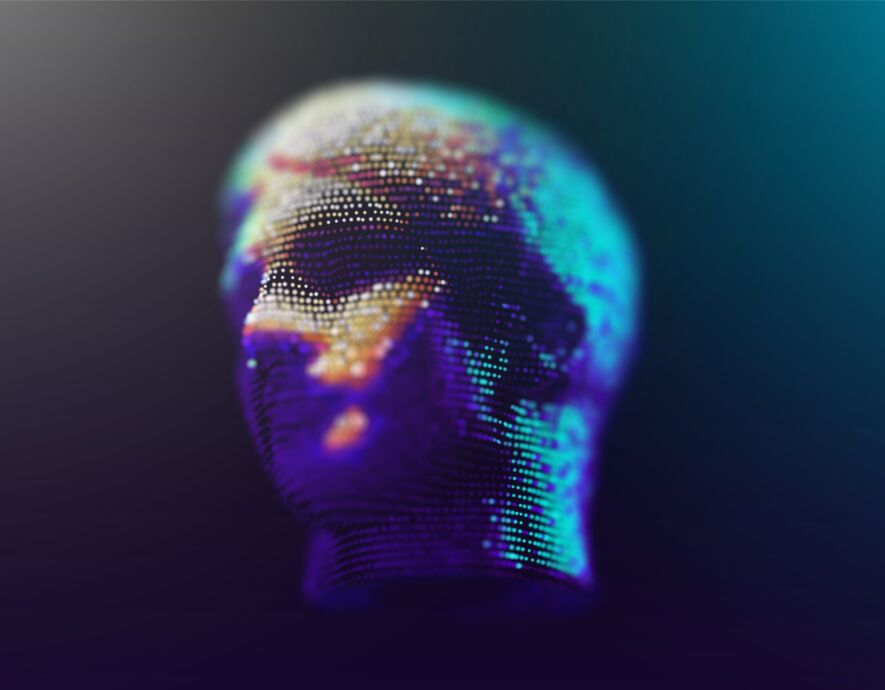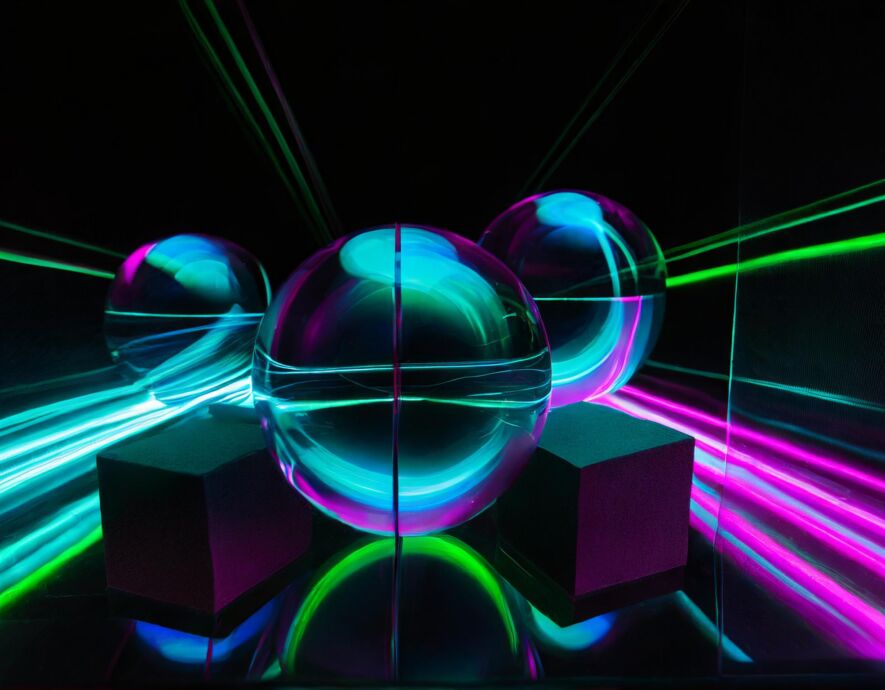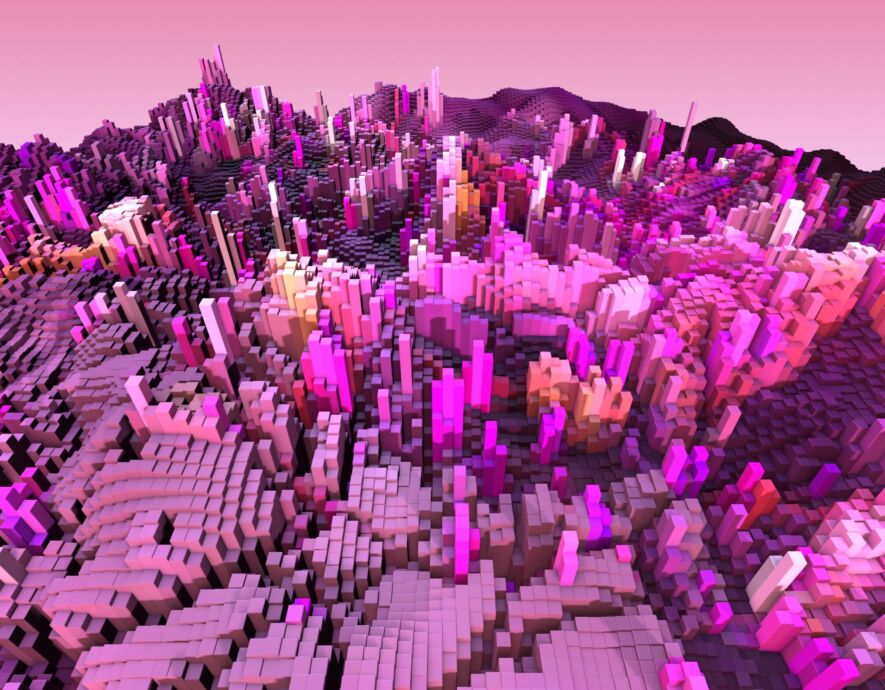
- Home
- Digital transformation
- How AI is shaking up intellectual property
How AI is shaking up intellectual property


On August 3, 2023, The New York Times changed the legal notice on its website. The US daily now requires its written consent for an AI to use its data for training. It’s a sign that generative AI is causing fear among creators that their work will be used without compensation or credit, creating a legal vacuum that will take time to be fully filled.
In the United States, the Copyright Review Board issued an important decision on September 5, 2023. This commission was tasked with ruling on the Copyright Office’s refusal to grant copyright protection to a work that was largely generated by research lab Midjourney’s AI. Called the « Théâtre D’Opéra Spatial« , this painting won first place in the digital category at the Colorado State Fair, causing an uproar in the art community.
While it was initially generated by AI, the image underwent a number of changes by the artist, Jason Allen. In addition to having entered 634 prompts, he used Adobe Photoshop to add and remove certain elements. Despite this creative contribution to the underlying Midjourney-generated image, the Copyright Review Board upheld the Copyright Office’s refusal of protection.
This rather strict decision is proof of the copyright protection authorities’ extreme prudence in the face of generative AI, given the extent to which they can undermine copyright. And rightfully so, since the data fed into AI can include works of art. This raises the question of whether such uses are legal. As for what AI generates, the criteria to allow them to be considered as protected works remain fuzzy.
Towards better protection for works exploited by generative AI?
In the United States, several ongoing cases are shaping the case law on copyright infringement by generative AIs. One of these is the artist-led class action lawsuits against Stability AI, Midjourney and DeviantArt. According to the plaintiffs, these companies AIs generate images using data that contain copyright-protected works, considering them to be « derived images ».
The U.S. District Court for the Northern District of California issued its ruling on October 30, 2023. The court refused to apply this theory of derivation to the case, basing its judgment on the principle of « fair use », which allows an exception to copyright when the disputed work « contains significant transformative elements », according to an old decision from the California Supreme Court.
In the court’s opinion, since generative AI uses works by many different artists, it is unlikely to produce a counterfeit of an original work unless it is proven that the generated image « bears some similarity to the original work » or contains « the protected elements of the original work ».
The judge allowed the artists to update their lawsuit so that it clearly specified the images whose copyright had been infringed under the conditions that he set out. It will be interesting to see how this case ends, just like the one that opposes Stability AI and Getty Images, who accuse the company of having used 12 million images from its database without permission for its AI, Stable Diffusion.
In France, a proposed law « aimed at regulating artificial intelligence through copyright« , presented on September 12, 2023, and referred to the Commission on Cultural Affairs and Education, aims to offer artists better protection against the spread of generative AI. As it explains, we need to « control […] the exploitation of AI-generated works » through « traceability by making identifiable the […] artists who should have been asked for permission before their creations […] were swallowed up by an algorithm that used them« .
For example, Article 1 calls for authors’ or copyright holders’ permission to be required before their works can be incorporated and exploited by AI. Article 3 requires works to « include the name of the author whose works were used to arrive at » the AI-generated result. Article 4 creates « a tax intended to enhance the value of creation » on any AI production generated « using works whose source cannot be determined« .
Beyond the technical difficulties of applying these measures (in addition to the opacity of generative AI, it is very difficult to follow such algorithmic chains), this proposed law is somewhat premature. The European regulation on AI (AI Act) is currently being drafted and will include provisions strengthening copyright protection for works used by generative AI.
On June 14, 2023, the European Parliament adopted Article 28b of the AI Act to require developers of generative AIs to « provide the public with a sufficiently detailed summary of the use of training data protected by copyright legislation« . This provision reinforces European Directive 2019/790, under which data mining of copyright-protected data is only allowed if the author has not opted out.
Can AI-generated works be protected by copyright?
Unlike the UK, where AI-generated creations could be easily protected under Section 9 of the Copyright, Designs and Patents Act 1988, which states that « in the case of an […] artistic work which is computer-generated, the author shall be taken to be the person by whom the arrangements necessary for the creation of the work are undertaken« , the United States requires a minimum of human intervention in the creative process.
On August 18, 2023, when the creator of an AI that had generated a work « on its own accord » sought protection for it, the federal judge for the District of Columbia (USA) ruled that this was impossible, as « the work lack[ed] the human authorship necessary to support a copyright claim« .
However, even when AI becomes more than a mere tool in the creative process, the Copyright Review Board, in its decision of September 5, 2023, accepted that a distinction should be made between the underlying, AI-produced image, which cannot be protected by copyright, and human creative additions, which can. The author of « Théâtre D’opéra Spatial » rejected this solution, seeking protection for the entire work.
Furthermore, when the work contains AI-generated content that does not exceed a « de minimis » threshold, then it may be fully protected by copyright, says the Copyright Review Board. French case law takes a similar view, since, as explained in a Paris court ruling of July 5, 2000, « computer-assisted musical composition, insofar as it involves human intervention of the author’s choosing […] leads to the creation of original works« . This could be extended to AI.
What can we do in France when AI goes beyond its role as a tool to such an extent that human intervention, required for a work to enjoy copyright protection, becomes more than secondary? Currently, the legal community is still divided. Perhaps the Copyright Review Board’s decision distinguishing between AI-generated content and human creative input will be a source of inspiration.
the newsletter
the newsletter


